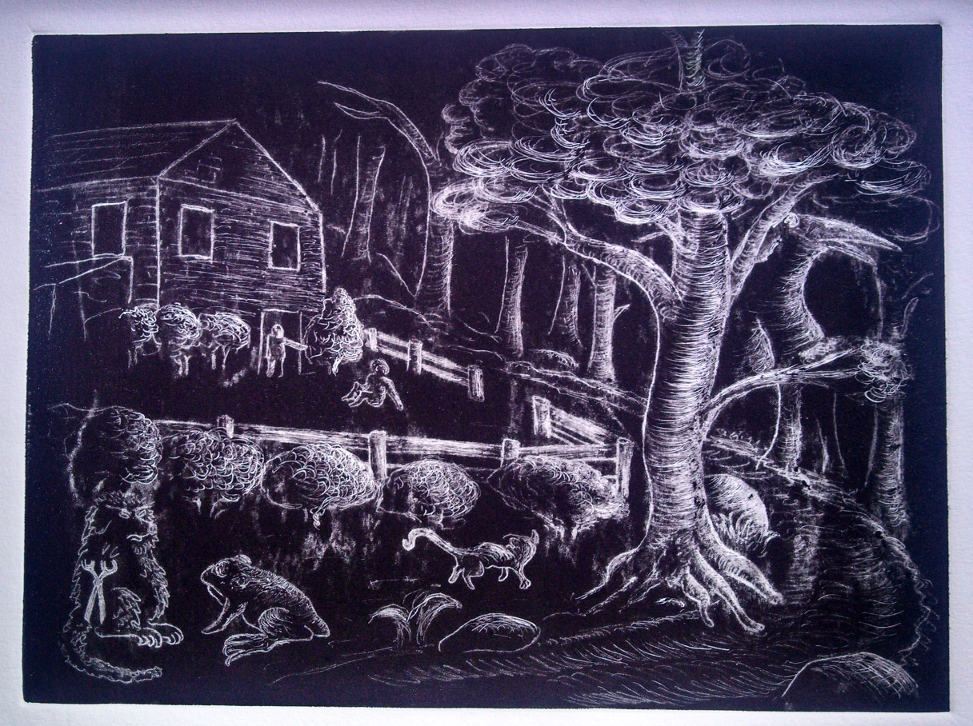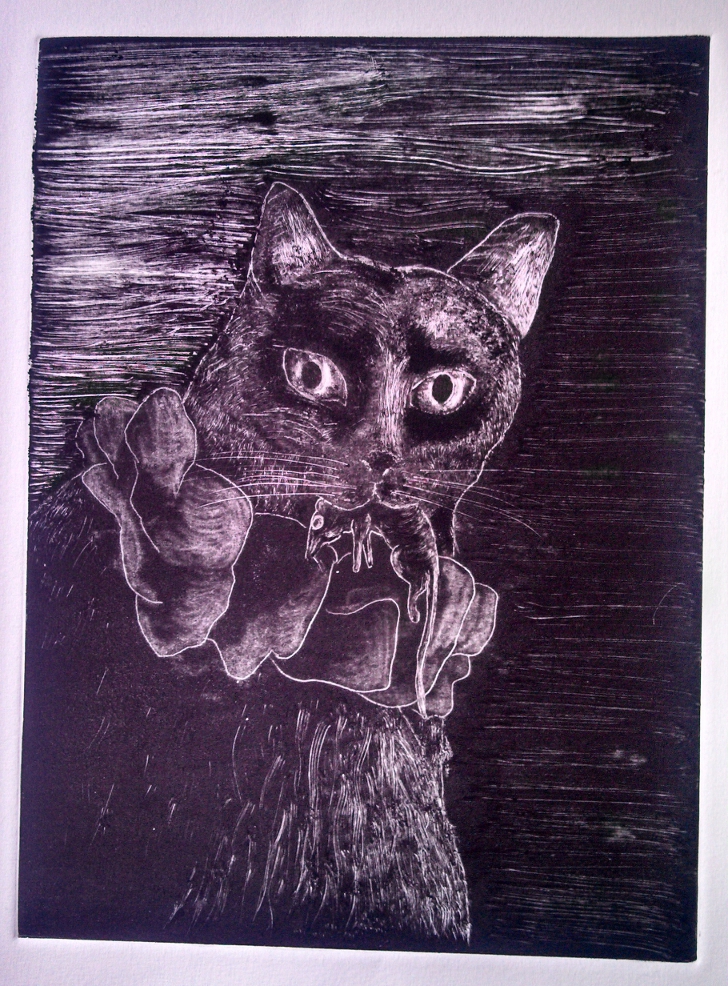An introduction and some exploration of printing Monoprints and Monotypes
This page is still under construction.
Most kinds of traditional printmaking involve applying ink to a printing plate which has some kind of design made on it (often by some variety of engraving, etching, or carving) that will hold the ink - The plate is then wiped clean of most ink except for what gets stuck in parts of the plate that are meant to hold the ink that will be transferred to paper; The plate is then put through a printing press, which under pressure will transfer the ink onto the paper... the plate can then be re-inked and prepared for printing again and repeated many times.
A Monoprint is different in that the plate that is inked generally has no premade design to hold the ink. Instead, the ink is applied to a blank surface and manipulated with paintbrushes, rags, cotton balls, q-tips, sticks, or whatever in a way that is best compared to painting or drawing to create an image on the plate. The prepared plate can then be pressed to paper pretty much the same as other prints, but because the ink is essentially just painted onto the surface of the plate, re-inking the plate to print again also means remaking the image - so no two monoprints are ever really the same. A monoprint can be reprinted multiple times from the same plate without re-inking, but each printing results in a progressively lighter "Ghost Print".
The process of creating a monoprint as described above is very simple and easy to do - but monoprints can get technically complicated through use of ghost prints to overlay multiple prints on one piece of paper, layering of colors, and deliberate use of inks of differing viscosities.
WTF is a monoprint or a monotype.... ?
a bit about the differences between the two...
exploratory prints made while working on the monoself portrait project
Other random examples from a sometime during 4 semesters of printmaking

